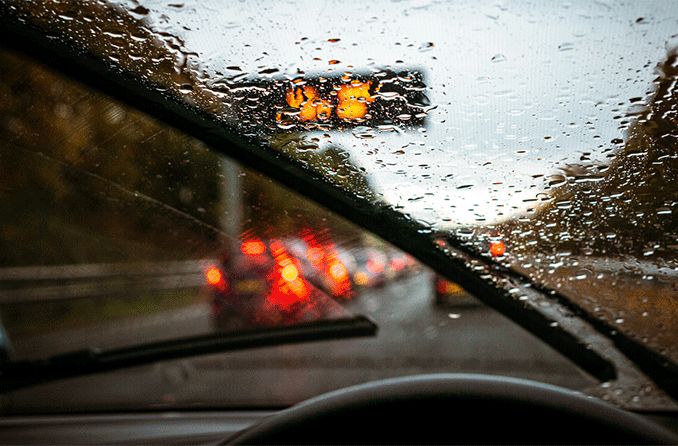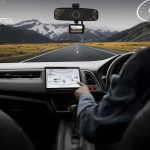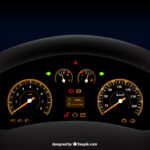Driving in the Rain: Dangers and Safety Tips

Over 5,891,000 car accidents occur every year, and more than 20% of them are because of climate related causes. The two driving causes? Downpour and wet asphalt. Remaining mindful as a driver can assist you with trying not to turn out to be essential for this measurement.
Keeping your eyes on the road and about is basic, particularly in negative weather patterns. Also, when dampness is involved, there are a few different things you should do to guarantee your wellbeing in the driver’s seat.
However it tends to be startling and risky to drive in such circumstances, driving at safe rates and being ready with working windshield wipers and headlights can help increase your visibility on the road to prevent car accident.
RISKS OF DRIVING IN THE RAIN
Driving in the rain can be a threat to the driver, travelers and the actual vehicle due to the absence of visibility. Postponed response times happen because of smoothness, and hydroplaning is a serious danger. These dangers can influence anybody, from the freshest to the most veteran drivers.
Aside from visibility, there are a few different variables that can influence your driving in the rain:
(1). Hydroplaning makes your tires lose footing with the street, drifting on a slender layer of water all things considered. It’s hard to guide as this occurs, and simple to fail to keep a grip on the vehicle.
(2). Response times are a lot more slow in wet circumstances, both for drivers and the controls of the vehicle. Keep a more prominent distance among yourself and different vehicles and drive all the more leisurely to oblige.
(3). Standing water can disguise road hazard like potholes. A lot of standing water might assume control over your vehicle. In any event, splashing through puddles can be risky, as it diminishes perceivability for yourself as well as other people out and about.
(4)Hard slowing down should be avoided from to forestall letting completely go and harming your vehicle’s stopping mechanism.
How truly does rain influence your vision out and about?
Vision can be debilitated by stormy circumstances whether the precipitation is light, weighty in the middle between. Be aware of your environmental elements, as rain can make you experience the following effects:
(1). Focal vision can become obstructed in significant circumstances. Assuming that it’s coming down sufficiently hard, windshield wipers can struggle with obliging, prompting a windshield that you can’t see obviously out of.
(2). Fringe vision might be impacted when your center movements to the street ahead. Despite the fact that you ought to be more centered around what’s before you during a storm, your side vision is as yet significant — and when it gets placed as a second thought, you can miss significant subtleties out and about.
(3). Light is dispersed and reflected from headlights, as the light bars become more fragile in downpour. This can make it challenging to see different vehicles, people on foot, street signs and, surprisingly, the actual street.
Headlights might perform at a more fragile rate in the downpour, yet trying not to utilize your high beams is significant. The more brilliant lights can cause a much more grounded glare, which can cause extra risk. High bars are additionally not quite so supportive as customary lights with regards to being apparent to different vehicles.
The Most Effective Method To Build Your Visibility While Driving In The Rain
As referenced previously, it is basic to have the option to consider your environmental factors to be you drive in the downpour, but obviously you can do as such. Windshield wipers, headlights, ventilation and speed all assume a part in your capacity to see on the blustery street:
Windshield wipers ought to be checked routinely to guarantee they are looking great (no breaks) and working appropriately. Make certain to involve the appropriate speed for the volume of precipitation you’re encountering.
Headlights ought to be turned on any time you really want to utilize your windshield wipers, both so that you might be able to see better and for different drivers to have the option to see you better. In addition to the fact that this is significant for your security, yet it is really the law in a few states.
Ventilation is significant for perceivability on all fronts. The mugginess that accompanies stormy weather conditions can make your windshield and vehicle windows haze up and disable your vision, however appropriate ventilation can deal with this issue. Have a go at involving the defroster capability in your vehicle to help, and don’t begin driving until you can see plainly.
Speed likewise assumes a part in perceivability. Assuming that you’re driving too quick, the downpour can make things significantly blurrier. In addition, your vehicle’s response time is fundamentally diminished in wet circumstances, so driving all the more leisurely is your smartest option.
In the event that rain becomes excessively weighty so that you might see, pull over in a protected spot if conceivable. Utilize your peril lights when expected to demonstrate that you are dialing back, pulling over, or to stand apart more out and about for your kindred drivers.
Different Ways To Drive In The Rain
A driver should stay alert intellectually and truly to control a vehicle in such compromising circumstances. Here are a few extra tips to consider while driving in the downpour:
(1) Keep two hands on the guiding wheel consistently for greatest control.
(2)Keep your eyes out and about consistently and stay away from interruptions.
(3)Drive gradually to oblige for diminished response times.
(4)Try not to utilize voyage control in the downpour. This component can lessen your consideration towards the street. It can likewise make your vehicle advance rapidly as you hydroplane, removing your control from the vehicle.
(5)Pull over for security in the event that downpour is too extraordinary to even consider seeing or drive in.
(6)Try not to pass through or toward standing or moving water. It’s almost difficult to decide the profundity of standing water from your vehicle, and it just takes a couple creeps of floodwater to conceal brought down electrical cables, render your vehicle stationary, or even set your vehicle above water.
(7)Try not to use country roads, as there might be seriously standing water in regions that are less occupied. Assuming that you experience floodwater, pivot if possible.
(8)Sprinkling in puddles can lessen your perceivability (and that of different drivers) out and about.
(9)Follow the tracks of the vehicle before you, as these tracks are where water is the most fanned out and about.
(10)Consistently investigate your vehicle’s tires, wipers and other security hardware to guarantee your assurance for all street conditions.
Is Your Vision Safe For Driving?
From minor things, for example, keeping up with wellbeing highlights on your tires and windshield wipers, to knowing how to explore in the event that you start to hydroplane, driving in the downpour requires your most extreme consideration and abilities as a driver.
Guaranteeing your vehicle is alright for driving in the downpour is significant — as is ensuring your vision is clear for the event.
See an eye specialist for a yearly eye test to ensure your vision is appropriate for driving in any climate. A yearly exam can help decide whether you really want a refreshed vision solution, as well as recognize any issues that might influence your vision as a driver.







